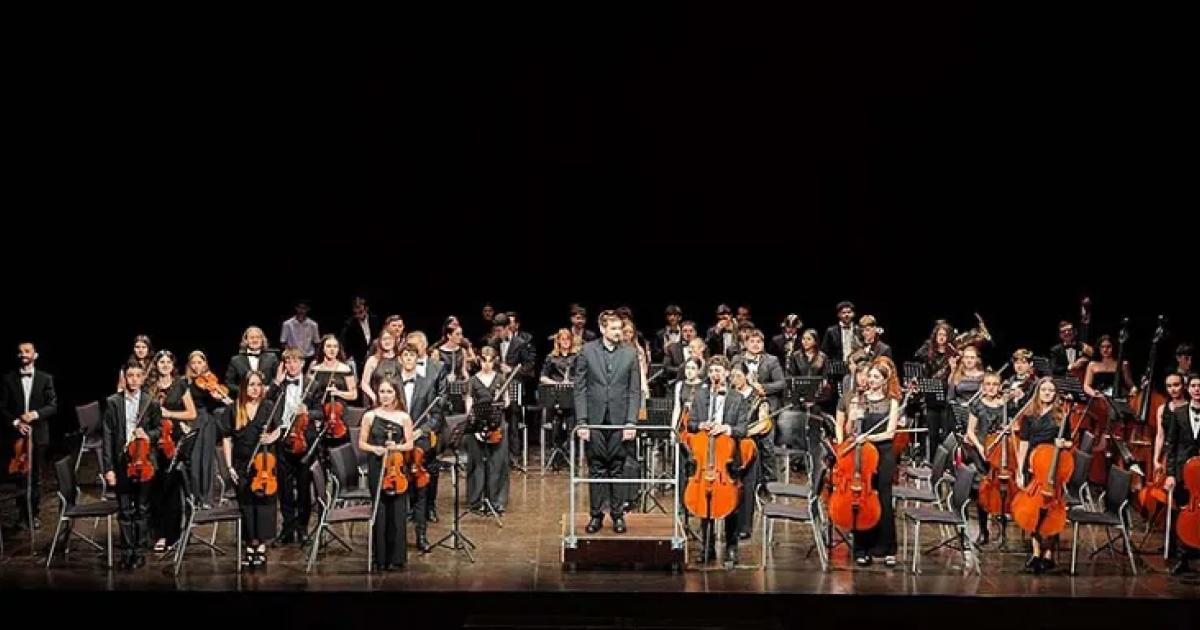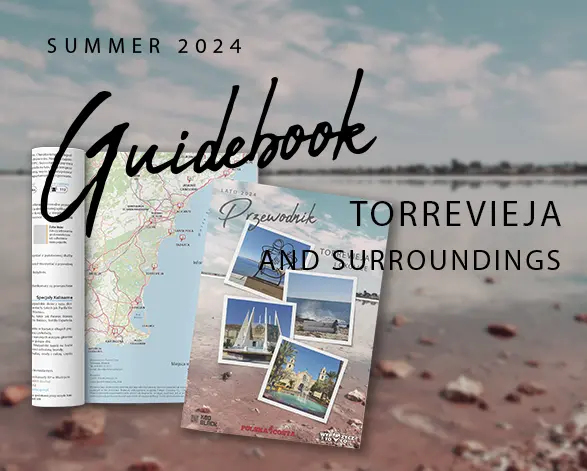
Torrevieja Youth Symphony Orchestra in surprise concert - A noon full of excitement
On Sunday noon at the Municipal Theater, the Torrevieja Youth Symphony Orchestra, under the direction of its leader, Maestro Adolfo Arronis, presented a concert that let me call a concert of positive surprises.... but let's start at the beginning.
Among the relatively modest repertoire of solo works for the largest string instrument are two concertos for double bass by Austrian composer Carl Ditter von Dittersdorf (1739-1799), providing excellent preparatory material for future professional double bass players. However, it is extremely rare for young students to have the opportunity to perform solo with an orchestra; they usually perform this work with piano accompaniment in school classrooms. Young musician Adrian Martinez is incredibly fortunate to have been chosen to demonstrate his talent when he performed the first movement (Allegro moderato) of Dittersdorf's Concerto No. 1 with orchestral accompaniment. The soloist surprised with his advanced technique and already mature musicianship. It is not easy to play an instrument that does not belong to favorite soloist instruments, nevertheless Adrian Martinez triumphantly overcame all the difficulties: double tones, flageolets, numerous march of sixteenth notes or a difficult cadence. The young musician can successfully consider his performance a success. Congratulations and many similar performances in the future!!!
The fact that the “Symphonic Monument” of the most emblematic, well-known, popular and beloved work by audiences and musicians alike has been chosen is a testament to the great ambition of the orchestra's young musicians and their conductor. During the performance of L. van Beethoven's (1770-1827) magnificent Symphony No. 5, in the development of its four movements, the orchestra, under the baton of maestro Adolfo Arronis, managed to combine the energetic and balanced initial effect of the “destiny” motif, the sensitivity and contrasting phrases of the second movement, and the liveliness with the spectacular crescendo that connects the third movement to the Finale. Overall, we witnessed a surprisingly good performance, which also showed that the youth orchestra can still surprise audiences with familiar and challenging repertoire. The performance of Beethoven's “Fifth” was also evidence of the enthusiasm with which the public approaches performances of great works of the symphonic repertoire.
Another pleasant surprise of Sunday's concert was the premiere of an enhanced version of Adolfo Arronis' symphonic work “Magellan's Expedition,” a composition performed by the Youth Symphony Orchestra under the direction of the composer himself. Maestro Arronis conducted “Magallanes” with natural fluidity, while musically telling the story with strongly contrasting individual parts of the work, giving each part a distinct character. The orchestra evocatively conveyed the depth of the work, offering an interpretation full of energy and tension. This was an even better performance than the one from five years ago (04.08.2020) which I had the opportunity to review from a video recording. here read:
Magellan's expedition
Thanks to the excellent quality of the video recording of a recent concert by the Torrevieja Youth Symphony Orchestra under the baton of its conductor Adolfo Arroniz, I had the opportunity to virtually experience the world premiere of a work by a talented musician who has so far become known as an orchestra conductor, arranger, cellist, educator and guitarist. To all of these skills, he has recently added one more - composer. Adolfo Arroniz successfully presented his Op.1 at the opening of FIJO in the summer of 2020 in the symphony hall of the International Auditorium in Torrevieja.
“Magellan's Expedition” can be confidently classified as a “symphonic poem” - a form very fashionable in the 19th and 20th centuries. The characteristic feature of similar compositions is their literary, historical or simple story content, expressed and presented through musical sounds. This type of composition can also be called program music, the purpose of which is to evoke in the listener the story contained in the title, stimulating the imagination by means of sounds, rhythms, chords and all possible combinations of sounds and artistic expressions offered by the symphony orchestra.
For the listener who is more or less familiar with the history of the first round-the-world expedition of Magellan - the Portuguese explorer and navigator - it was not difficult to move with his thoughts to the atmosphere of the years 1519-1522. The music created by A. Arroniz shows the various stages of this expedition - from the preparations for the voyage, the crossing of the Atlantic, the mutiny in Patagonia, Magellan's death in the Philippines - (cello solo), to the return journey to Spain. The music in “Magellan's Expedition” has an exceptionally solemn character, with Arroniz creating a long melody with rhythmic elements in undivided unison. I was impressed by this work, which could serve as a fantastic illustration for a film about Magellan's expedition.
As usual, Maestro A. Arroniz tightly controlled the course of the concert, setting the tempo and various entrances, achieving a full, complete sound of excellent quality. The Torrevieja Youth Symphony Orchestra deserves a huge round of applause for achieving something that will surely remain in the memory of the young musicians and the audience for a long time.
The beautifully performed solo of the first cellist should be appreciated, as well as the brass choir concluding the work. In summary, I must emphasize the excellent preparation of the orchestra, which of course was appreciated by the audience with thunderous applause,forcing the orchestra to perform the cheerful pasodoble “Amparito Roca” as an Encore.
The public, which has been following the development of the Orchestra, a “daughter” of OST since its inception, can be proud of the excellent progress made by the ensemble, which is able to successfully and at a high level carry out very ambitious and demanding programs.








